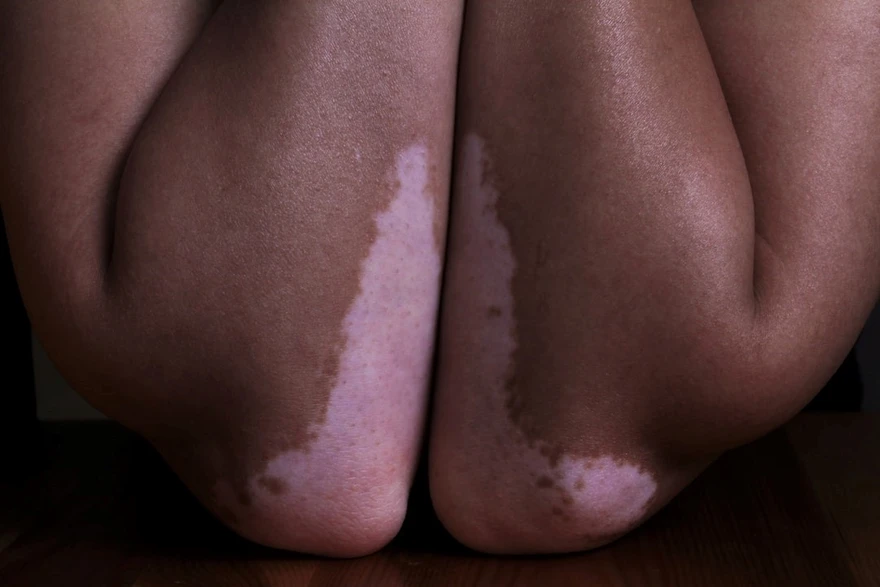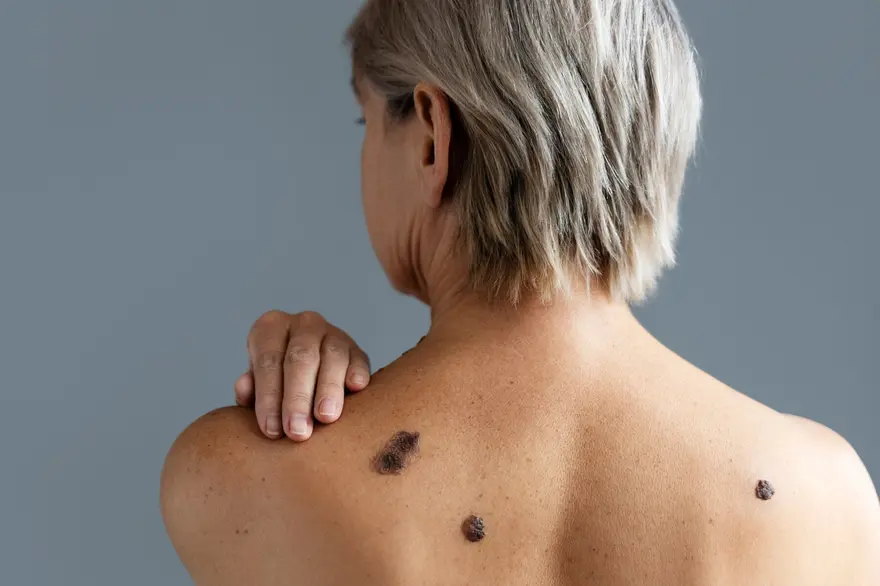Preventive Healthcare
Understanding Vitiligo: Symptoms, Causes, Treatment & Types
2481 Views
0

What is Vitiligo?
Vitiligo is a skin condition that causes the skin to lose colour or pigment. The areas affected by this look lighter than your usual skin tone or, in some cases, turn white. Areas of discolouration less than 1 cm wide are known as macules, while those larger than 1 cm are called patches.
How Does Vitiligo Affect Different Skin Tones?
Melanin helps determine the colour of hair and skin. So, once the cells producing melanin stop functioning or die, resulting in vitiligo. However, vitiligo can affect people of all skin types but is usually more noticeable in people with brown or black skin.
How Does Vitiligo Start And Progress?
Individuals usually experience varying amounts of skin discolouration, with some facing just a few depigmented areas and others having widespread loss of skin colour.
Vitiligo usually starts as a small white macule or patch gradually spreading throughout the body. Larger vitiligo patches continue to widen and spread but may often stay in the same place for many years. Smaller macules shift and can change over time, and those areas of the skin may regain and lose their pigment.
The vitiligo symptoms often begin with the hands, feet, face, or forearms. However, they can also affect the mucous membrane, which is the moist lining of the mouth, nose, rectal, or genital area, as well as the eyes and inner ears.
What are the Types of Vitiligo?
There are six main types of vitiligo. They are:
- The most common type is generalised, and macules can appear at various places on the body, such as the face, hands, forearms, or feet.
- Segmental that can affect only one side of your body or area like the face or hands.
- Mucosal Vitiligo is a type of vitiligo that affects the mucous membrane of your mouth or genitals.
- Focal Vitiligo is a rare type in which the macules develop in a small area and do not spread in a specific pattern within a year or two.
- Trichome Vitiligo can cause a bullseye with a white or colourless centre, an area of lighter pigmentation, and an area with your natural skin tone.
- Universal is another rare kind of vitiligo that can cause over 80% of your skin to lose colour.
What are the Symptoms of Vitiligo?
Vetiligo usually starts before the age of 30. The most common vitiligo symptoms are:
- Loss of skin colour in patches
- Premature greying or whitening of hair on the head, eyebrows, eyelashes, or beard
- Loss of colour in the tissue that lines the nose and mouth
Where Will I Have Symptoms of Vitiligo?
Vitiligo symptoms often appear in your hands, arms, face, feet, genitals, and mucous membranes inside your mouth, lips, and nose.
What is Vitiligo Caused By?
The main vitiligo cause is a lack of pigment melanin in your skin. While the reason for this is still unknown, researchers believe that vitiligo causes include:
- Autoimmune diseases like Addison's disease, pernicious anaemia, psoriasis, rheumatoid arthritis, systemic lupus erythematosus, thyroid disease, and Type 1 diabetes cause your immune system to overreact and develop antibodies that destroy melanocytes.
- A genetic mutation or any change in your DNA can affect the functioning of your melanocytes, causing vitiligo. Over 30 genes can increase your risk of vitiligo.
- Frequent emotional or physical stress is another trigger of vitiligo, which causes pigmentation by your melanocyte cells. This can occur after a severe injury or accident.
- Environmental factors such as ultraviolet radiation and toxic chemical exposure can also affect the functioning of melanocyte cells and cause vitiligo.
Is Vitiligo a Genetic Disease?
Research shows that around 30% of vitiligo cases are caused due to genetics. This signifies that vitiligo is genetic and can be inherited from your biological parents.
What are the Complications of Vitiligo?
While vitiligo is more of a cosmetic disorder, the vitiligo symptoms can cause a few complications. For instance:
- Sunlight sensitivity causes your skin to burn instead of a tan.
- Abnormalities in your retina and colour variation between the irises. Although vision is unaffected, there can be some inflammation in the retina or iris.
- If you have vitiligo, you may also be susceptible to other common autoimmune conditions like hypothyroidism, diabetes, and anaemia.
- Vitiligo can further cause individuals to be emotionally affected by changes in skin colour. It can also cause anxiety or depression because the affected individual is isolated.
How is Vitiligo Diagnosed?
Your healthcare professional will visually examine your skin, which usually leads to a relatively accurate diagnosis of vitiligo. They may also use a Wood's lamp, an ultraviolet light lamp that helps to differentiate between vitiligo and other skin conditions.
How is Vitiligo Treated?
Vitiligo treatment is not always necessary as it is a cosmetic condition. However, if this condition causes emotional strife, your healthcare provider may suggest treatment options, including:
Medications
Vitiligo symptoms can be treated with corticosteroids, topical Janus kinase inhibitors, and calcineurin inhibitors.
Light Therapy
Photo or light therapy for vitiligo involves using light boxes, ultraviolet B lights, or medical-grade lasers directed at the skin for a short time.
Depigmentation Therapy
Depigmentation therapy is a kind of vitiligo treatment that removes the skin's natural skin tone around the affected area to match it.
Surgery
Blister grafting and skin grafts are two primary surgical treatments for vitiligo. However, this form of therapy is not always recommended and cannot be done in some instances of vitiligo in children and individuals with active unstable vitiligo.
Counselling
If you suffer from vitiligo symptoms, it may help to visit a counsellor to improve your self-esteem, anxiety, or depression.
How Can You Prevent Vitiligo?
As there is no one cause of vitiligo, preventing it is difficult. Still, you can reduce your risk of developing these conditions. For that:
- Practice safe sun exposure habits
- Avoid excessive mental or physical stress
- Use a moisturizer daily
- Manage any underlying autoimmune condition
What Can I Expect If I Have Vitiligo?
Vitiligo affects your physical appearance, which may affect how you feel about yourself in social society. Carrying on with your regular routine and talking to people with similar conditions or a mental health counsellor can help build self-esteem.
Can Vitiligo Go Away on Its Own?
Sometimes, minor cases of vitiligo can go away on their own, but others may need treatment to reduce discolouration.
Can You Stop Vitiligo From Spreading?
Sun protection is essential to stopping the spread of vitiligo. Exposure to the sun can burn skin easily and worsen vitiligo.
What Happens If Vitiligo is Left Untreated?
If vitiligo is left untreated, it can increase your chances of sunburn and mood disorders and even increase the progression of the disease.
Conclusion
Vitiligo treatment is not always necessary, but you can reduce the spread of this condition by using topical creams and oral medication. Moreover, vitiligo causes changes in your skin, which can, in turn, cause emotional discomfort. Therefore, keeping a check, especially on any autoimmune disease, can help manage the vitiligo symptoms. Know if you are at risk of autoimmune disease with regular health checkups and diagnostic tests. Metropolis Labs provides various genetic and diagnostic tests to help you maintain a healthy lifestyle. Contact us today for an appointment.
 Home Visit
Home Visit Upload
Upload














1701259759.webp)









 WhatsApp
WhatsApp